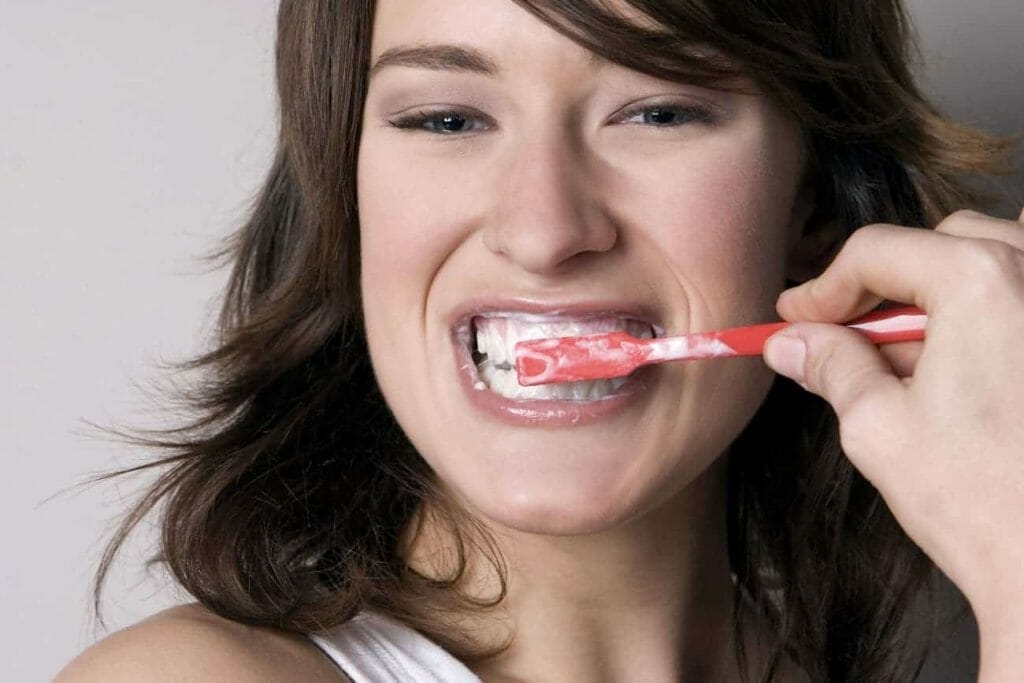Healthy and white teeth are an indispensable element of a good image. However, not everyone was equipped by nature with a dazzling array of teeth, therefore more and more people take various measures to make their teeth look properly. There are many methods of whitening, both professional treatments performed in dental offices as well as products to be used on your own. Tooth whitening at home has never been easier, there are various whitening products available – toothpastes, gels, rinses or trays.
Table of contents
Why do our teeth look the way they do and what factors affect tooth colour?
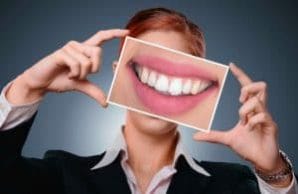
The natural colour of teeth does not often meet our expectations, ranging from snowy white, through ivory, to shades of grey and even to yellow-brown. What is more, it happens that individual teeth of the same person differ in shade.
The condition and colouring of our teeth is largely determined by genetic factors because they influence the colour of the dentin, the thickness and shade of the enamel as well as the degree of mineralisation and its chemical composition. Age is also important as with time the enamel wears away and becomes thinner, and darker dentin starts to show through.
Our diet and stimulants also have a significant impact on the colour of our teeth. Coffee, tea, red wine, juices and strong herbs strongly discolor teeth. Smoking has a huge impact on teeth, both in terms of colour and health. Therefore, teeth whitening at home or at the dentist’s should be combined with a change of lifestyle, only then can we expect long lasting effects. Unfavourable changes in the colour of teeth may also result from general diseases such as hormonal disorders, pancreatic disorders, blood diseases and genetic disorders.
What methods are used for teeth whitening at the dentist’s office?
The most commonly used method is a procedure using a preparation with a high concentration of hydrogen peroxide and a special lamp for irradiation. The first step is to remove deposits and clean the plaque. Then the gums are protected with a suitable agent and the teeth whitening preparation is applied. It remains on the teeth for about 15 minutes, during which the irradiation is performed. If necessary, the treatment may be repeated 3 to 4 times. After the treatment a so-called white diet should be followed for a few days, i.e. all colourful foods, as well as too cold or too hot should be avoided. The procedure increases the sensitivity of enamel.
Severe tooth hypersensitivity is a contraindication for this type of treatment as well as poor dental health, young age, pregnancy and allergy. It is also worth knowing that in some cases this method may prove to be ineffective, namely when the enamel turns out to be exceptionally resistant to whitening.
The second method used in dental offices is application of whitening trays. On the basis of a dental impression the dentist prepares individually fitted foil overlays, which have to be worn for half an hour to an hour a day over the period from 2 to 4 weeks. This method is less risky in terms of causing tooth sensitivity, but in both cases the side effect can be both sensitivity and gingivitis.
Read also about Happy Smile
Home teeth whitening. What products are available?
As an alternative to a visit to the dentist’s, there are various remedies available which you can use on your own. So how to whiten your teeth at home? There are really many possibilities – whitening pastes and strips, gels, mouthwashes, containers with brushes, and finally ready overlays, thanks to which the whitening procedure can be performed at home, not necessarily at the dentist’s.
Teeth whitening toothpastes – the easiest way to improve colour
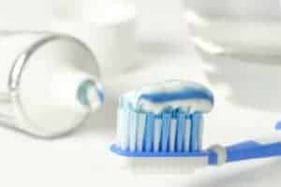
The pharmaceutical market offers a wide range of toothpastes that simultaneously have the function of removing minor discolourations. Usually such toothpaste gives the effect of brightening by one or two tones.
Such an effect is possible because whitening toothpastes contain special enzymes, abrasives and microgranules. They cause dissolving and removal of accumulated deposits. This type of paste can be used for no longer than 2 months, moreover, one should pay attention to the abrasiveness index RDA, which should not be higher than 200. Longer use and higher index RDA may cause damage to the enamel.
It is advisable to complement the use of whitening toothpaste with a special toothbrush with rubber bristles that polish the tooth surface and a mouthwash that blocks plaque build-up.
Whitening with baking soda
This is a method as old as the world, due to the well-known discolouring effect of baking soda. But in this case the old and common method does not mean the best solution. Admittedly, baking soda is an ingredient of many whitening toothpastes and may thus contribute to teeth brightening, but direct scrubbing with baking soda alone causes abrasion of the enamel. Therefore, it is not worth risking.
Tooth whitening by scrubbing with charcoal
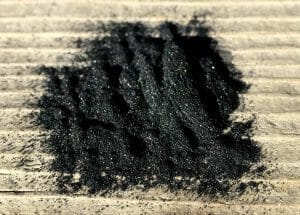
Trying to whiten by scrubbing with activated charcoal alone or its mixture with coconut oil is a controversial method, to say the least. While it may brighten your teeth, it definitely damages your enamel and causes tooth erosion. It’s a different matter if activated charcoal is an ingredient of a whitening powder (although even then we must take precautions) or whitening toothpaste. As far as the powder is concerned, it is worth choosing an ecological product, which contains natural components, organic active carbon, clay, herbs.
Activated charcoal is also included in many very good quality whitening pastes, such as, for example, Whitify Carbon. Apart from the carbon which absorbs impurities, it contains silica which effectively abrades deposits, xylitol which fights bacteria and fungi and other substances which contribute to higher effectiveness of the paste. Thanks to them Whitify Carbon perfectly cleans teeth from plaque and stains, brightens them and inhibits the formation of tartar, at the same time refreshes breath and cares for oral health.
Check: Black toothpaste ranking
Tooth whitening strips and gel
A very popular way to whiten teeth at home is to use elastic strips soaked in whitening gel. The method of use is very simple – gel-filled strips are glued twice a day to the upper and lower teeth, but not along the entire dental arch, but only from the fourths to the fourths, as the strips are relatively short. The duration of such treatment is 20 to 30 minutes. After a few days of use a visible improvement in the colour of teeth may be observed.
Apart from strips the whitening gel is also available in other forms, for example, in a container with a brush for painting teeth. Other preparations, such as varnish or wax, are also used for painting, however, as they do not fully reach the spaces between teeth, overlays seem to be a better method.
Whitening trays – not only in the dentist’s office
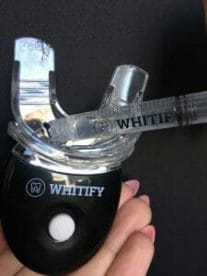
Whitening with the use of trays can also be performed at home. Then we use ready products, which usually also contain hydrogen peroxide as an active substance. After thorough cleaning of the teeth the whitening gel is introduced into trays and they are placed on teeth for the time and frequency specified in the instructions. Typically, you can lighten your teeth by 2 to 4 tones within a few weeks.
New in whitening techniques and products is the innovative Whitify home teeth whitening system. This device combines the effectiveness of proven whitening substances with modern LED technology. It is simple to use and extremely effective. What is more, you can even out the colour and brighten your teeth by yourself, just like expensive procedures at the dentist’s office.

